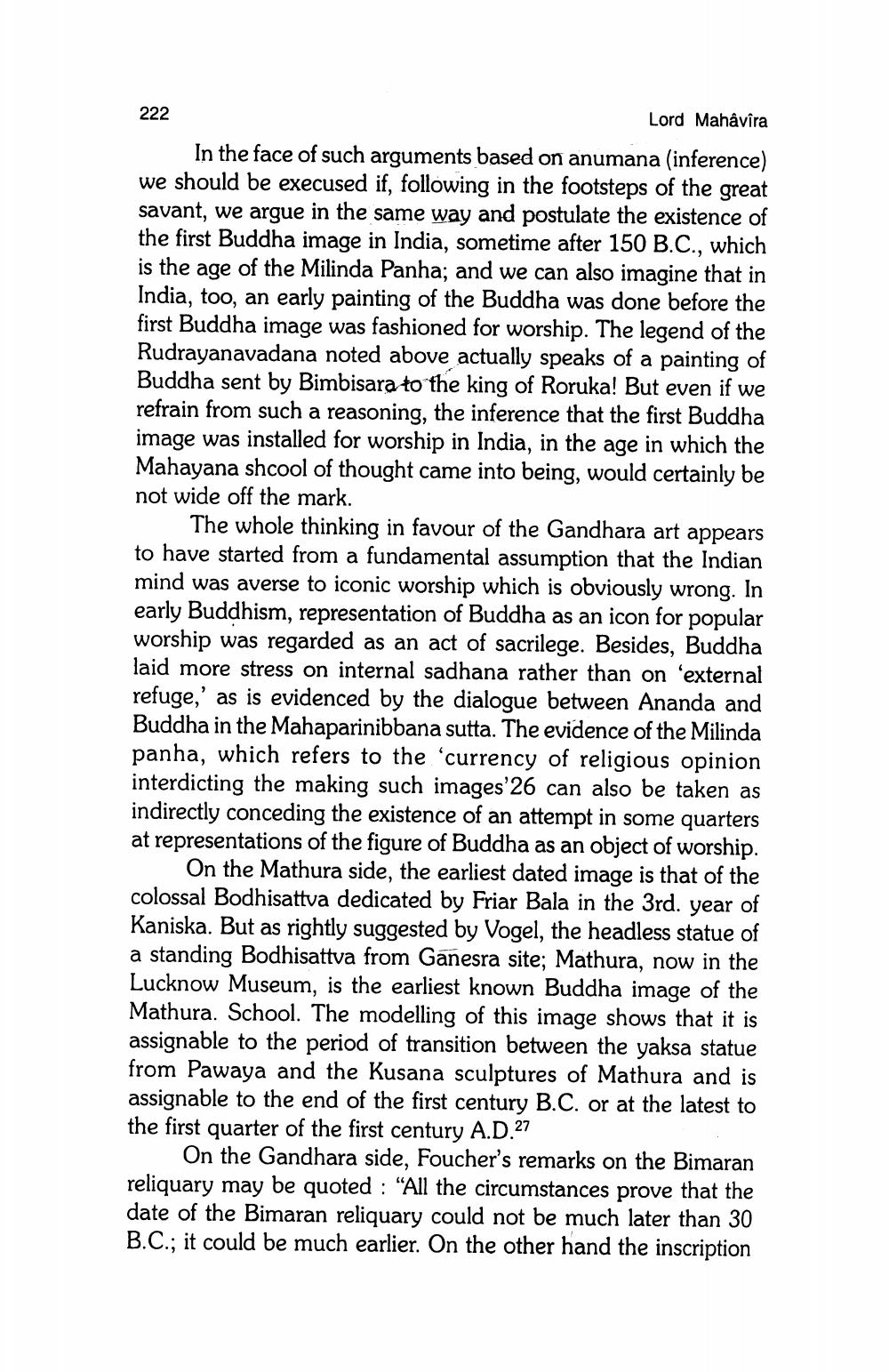________________
222
Lord Mahâvîra In the face of such arguments based on anumana (inference) we should be execused if, following in the footsteps of the great savant, we argue in the same way and postulate the existence of the first Buddha image in India, sometime after 150 B.C., which is the age of the Milinda Panha; and we can also imagine that in India, too, an early painting of the Buddha was done before the first Buddha image was fashioned for worship. The legend of the Rudrayanavadana noted above actually speaks of a painting of Buddha sent by Bimbisara to the king of Roruka! But even if we refrain from such a reasoning, the inference that the first Buddha image was installed for worship in India, in the age in which the Mahayana shcool of thought came into being, would certainly be not wide off the mark.
The whole thinking in favour of the Gandhara art appears to have started from a fundamental assumption that the Indian mind was averse to iconic worship which is obviously wrong. In early Buddhism, representation of Buddha as an icon for popular worship was regarded as an act of sacrilege. Besides, Buddha laid more stress on internal sadhana rather than on 'external refuge,' as is evidenced by the dialogue between Ananda and Buddha in the Mahaparinibbana sutta. The evidence of the Milinda panha, which refers to the currency of religious opinion interdicting the making such images' 26 can also be taken as indirectly conceding the existence of an attempt in some quarters at representations of the figure of Buddha as an object of worship.
On the Mathura side, the earliest dated image is that of the colossal Bodhisattva dedicated by Friar Bala in the 3rd. year of Kaniska. But as rightly suggested by Vogel, the headless statue of a standing Bodhisattva from Ganesra site; Mathura, now in the Lucknow Museum, is the earliest known Buddha image of the Mathura. School. The modelling of this image shows that it is assignable to the period of transition between the yaksa statue from Pawaya and the Kusana sculptures of Mathura and is assignable to the end of the first century B.C. or at the latest to the first quarter of the first century A.D.27
On the Gandhara side, Foucher's remarks on the Bimaran reliquary may be quoted : “All the circumstances prove that the date of the Bimaran reliquary could not be much later than 30 B.C.; it could be much earlier. On the other hand the inscription




